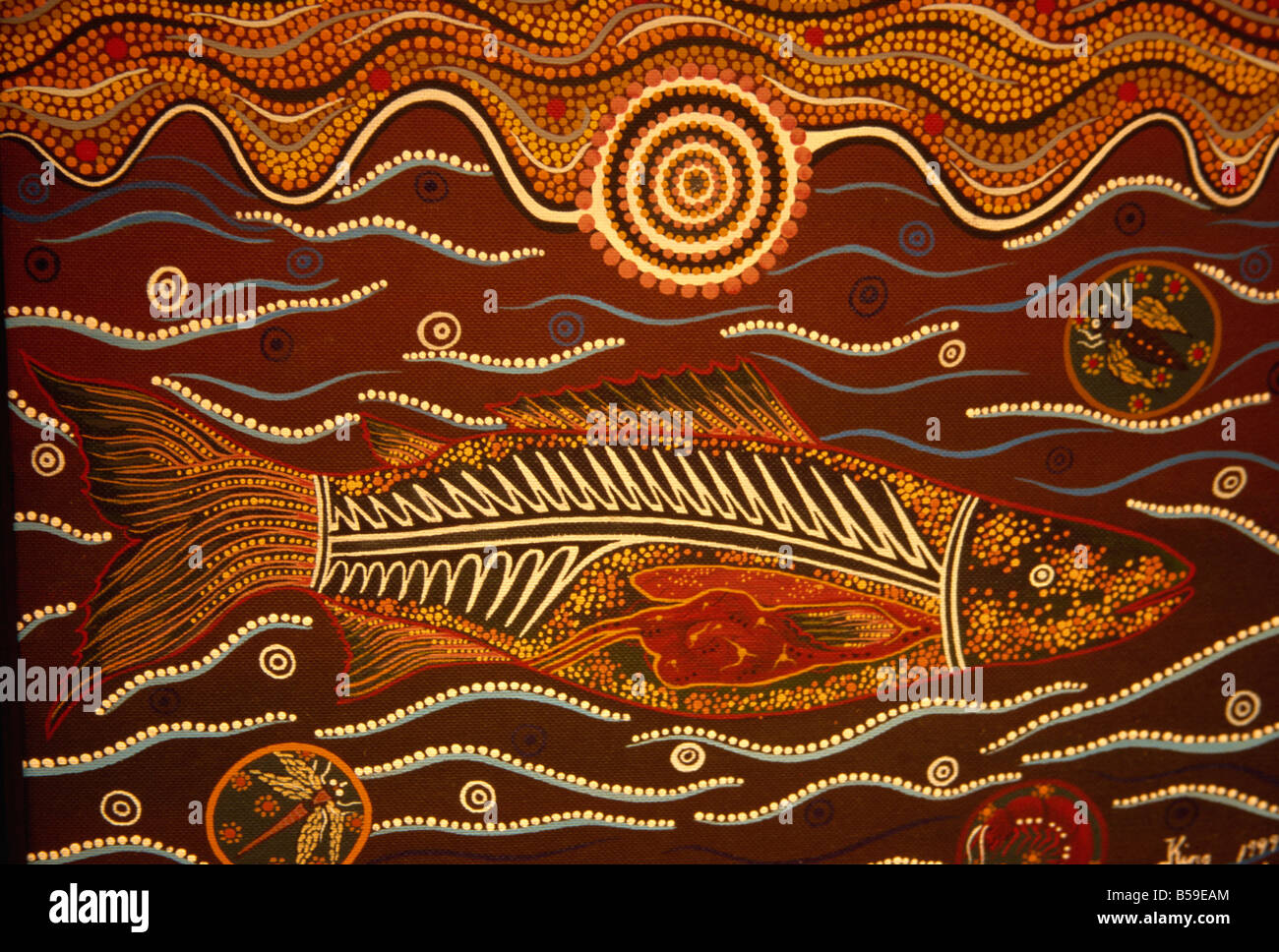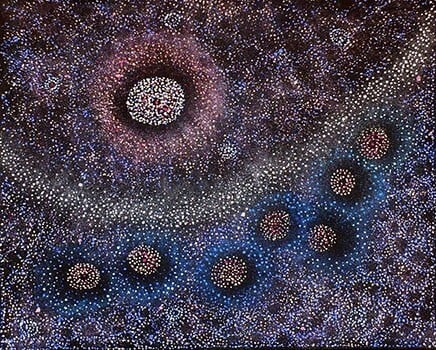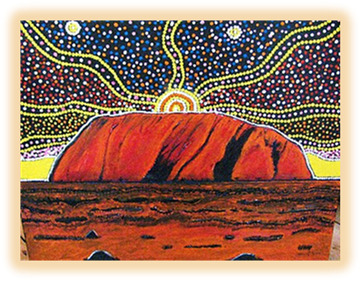The Dreamtime: Unveiling the Heart of Aboriginal Culture
The Dreamtime: Unveiling the Heart of Aboriginal Culture

The Aboriginal people of Australia are renowned for their deep connection to the land and their rich cultural heritage. At the heart of this heritage lies the Dreamtime, a concept that transcends mere storytelling and forms the very foundation of their worldview, their understanding of the universe, and their relationship with the natural world.
This article delves into the fascinating world of the Dreamtime, exploring its significance, its stories, and its enduring influence on Aboriginal culture. We will also examine the role of dreamtime figures in Aboriginal art and rituals, and how the concept continues to shape the lives of Aboriginal people today.
Related Articles: The Dreamtime: Unveiling the Heart of Aboriginal Culture
- The Lingua Franca Of Australia: Exploring The Official Language And Its Rich Linguistic Landscape
- Embracing The Sacred: A Journey Into The Realm Of Dreamtime
- A Journey Through Time: Unveiling The Secrets Of Tontem Chapel
- Blooming With Meaning: Exploring The Beauty And Significance Of Native Floral Tattoos
- The Rhythms Of The Earth: A Journey Through Aboriginal Musical Instruments
Understanding the Dreamtime
The Dreamtime, also known as the "Dreaming," is not a specific time in the past but rather a timeless, spiritual realm where the ancestors created the world and everything in it. It is a realm of creation, connection, and transformation, where the spirits of the ancestors still reside and continue to influence the present.
The Creation Stories:
Dreamtime stories are central to Aboriginal culture, serving as a vibrant tapestry of knowledge, history, and spirituality. These stories, passed down through generations, explain the origins of the land, its flora and fauna, its natural features, and even the customs and laws of the people.
For example, the story of the Rainbow Serpent, a powerful and benevolent being, is found in many Aboriginal cultures across Australia. The Rainbow Serpent is said to have created rivers, waterholes, and mountains, and its presence is often marked by rainbows in the sky.
The Ancestral Spirits:
The Dreamtime is populated by ancestral beings, known as "spirit ancestors," who are the creators of the world. These beings, often depicted as animals, humans, or hybrid creatures, are powerful and revered figures who continue to influence the lives of Aboriginal people.
The actions of these ancestral beings in the Dreamtime are reflected in the natural world. For instance, the tracks of a giant emu might be seen in the landscape, or the shape of a mountain might resemble a sleeping kangaroo. These physical manifestations serve as reminders of the ancestral beings’ presence and their enduring influence.

The Importance of the Dreamtime:
The Dreamtime is more than just a collection of stories; it is a living, breathing force that permeates every aspect of Aboriginal life. It provides a framework for understanding the world, the laws that govern it, and the responsibilities of human beings towards the land and its creatures.
The Dreamtime also offers a sense of identity and belonging. It connects individuals to their ancestors, their community, and the land itself. By understanding their place in the Dreamtime, Aboriginal people can find meaning and purpose in their lives.
The Dreamtime in Art and Rituals:
The Dreamtime is vividly expressed in Aboriginal art, music, dance, and rituals. The intricate designs and symbols found in Aboriginal rock art often depict Dreamtime stories, ancestral beings, and the sacred sites where these events occurred.

Rituals and ceremonies are also deeply connected to the Dreamtime. These ceremonies are often performed to commemorate Dreamtime events, to seek guidance from the ancestors, or to ensure the well-being of the community and the land.
The Dreamtime Today:
Despite the challenges faced by Aboriginal people in the past and present, the Dreamtime remains a vital part of their culture and identity. It continues to inspire their art, their music, their storytelling, and their understanding of the world.
The Dreamtime is also a powerful symbol of resilience and continuity. It represents the enduring spirit of the Aboriginal people and their deep connection to the land and their ancestors.
Dreamtime Figures in Aboriginal Art:

Dreamtime figures are prominently featured in Aboriginal art, often depicted in a stylized and symbolic manner. These figures are not simply representations of the ancestors but rather living embodiments of their power and presence.
Some common Dreamtime figures in Aboriginal art include:
- The Rainbow Serpent: As mentioned earlier, the Rainbow Serpent is a powerful and benevolent being associated with water, fertility, and creation. It is often depicted as a large, serpentine creature with colorful markings.
- The Wandjina: The Wandjina are spirit beings associated with the Kimberley region of Western Australia. They are depicted as large, white figures with large eyes and a distinctive headpiece. The Wandjina are believed to control the weather and to be responsible for the well-being of the land and its people.
- The Seven Sisters: The Seven Sisters are a group of spirit beings who represent the Pleiades star cluster. They are often depicted as women walking across the sky, carrying their babies. The Seven Sisters are associated with fertility, motherhood, and the cycle of life.
- The Ancestor Animals: Many Dreamtime figures are depicted as animals, such as kangaroos, emus, snakes, and birds. These animals are often associated with specific places, events, or cultural practices.
The Dreamtime and Contemporary Aboriginal Culture:
The Dreamtime continues to play a significant role in the lives of Aboriginal people today. It is a source of inspiration for artists, musicians, and writers, and it continues to shape their worldview and their relationship with the land.
Many Aboriginal communities are actively working to preserve and revitalize their Dreamtime traditions. They are sharing their stories with younger generations, creating new art inspired by the Dreamtime, and advocating for the protection of sacred sites.
FAQ about the Dreamtime and Aboriginal Culture:
Q: What is the Dreamtime?
A: The Dreamtime, also known as the Dreaming, is a timeless, spiritual realm where the ancestors created the world and everything in it. It is a realm of creation, connection, and transformation, where the spirits of the ancestors still reside and continue to influence the present.
Q: What are Dreamtime stories?
A: Dreamtime stories are stories that explain the origins of the land, its flora and fauna, its natural features, and even the customs and laws of the people. They are passed down through generations and are central to Aboriginal culture.
Q: What are Dreamtime figures?
A: Dreamtime figures are ancestral beings, often depicted as animals, humans, or hybrid creatures. They are powerful and revered figures who continue to influence the lives of Aboriginal people.
Q: How is the Dreamtime expressed in Aboriginal art?
A: The Dreamtime is vividly expressed in Aboriginal art, music, dance, and rituals. The intricate designs and symbols found in Aboriginal rock art often depict Dreamtime stories, ancestral beings, and the sacred sites where these events occurred.
Q: What is the significance of the Dreamtime for Aboriginal people today?
A: The Dreamtime continues to play a significant role in the lives of Aboriginal people today. It is a source of inspiration for artists, musicians, and writers, and it continues to shape their worldview and their relationship with the land.
Q: How can I learn more about the Dreamtime?
A: There are many resources available to learn more about the Dreamtime, including books, documentaries, and websites. You can also visit museums and art galleries that exhibit Aboriginal art, or attend cultural events that feature Dreamtime stories and performances.
Conclusion:
The Dreamtime is a profound and multifaceted concept that lies at the heart of Aboriginal culture. It is a testament to the rich history, spirituality, and resilience of the Aboriginal people of Australia. By understanding the Dreamtime, we can gain a deeper appreciation for the unique and enduring culture of the First Nations people of this land.

Closure
Thus, we hope this article has provided valuable insights into The Dreamtime: Unveiling the Heart of Aboriginal Culture. We thank you for taking the time to read this article. See you in our next article!


